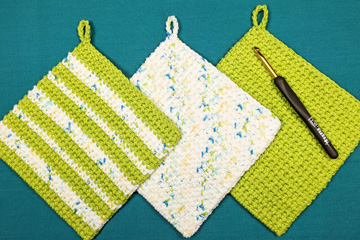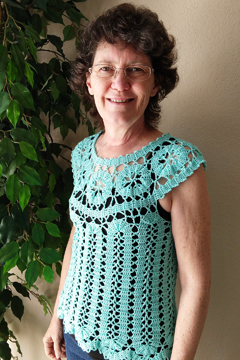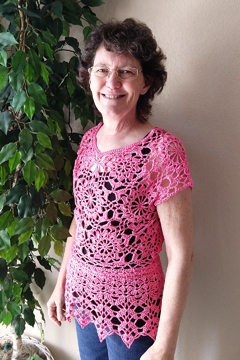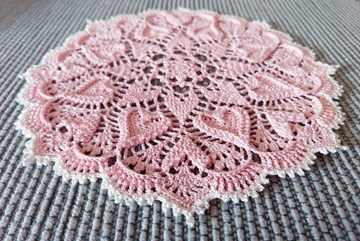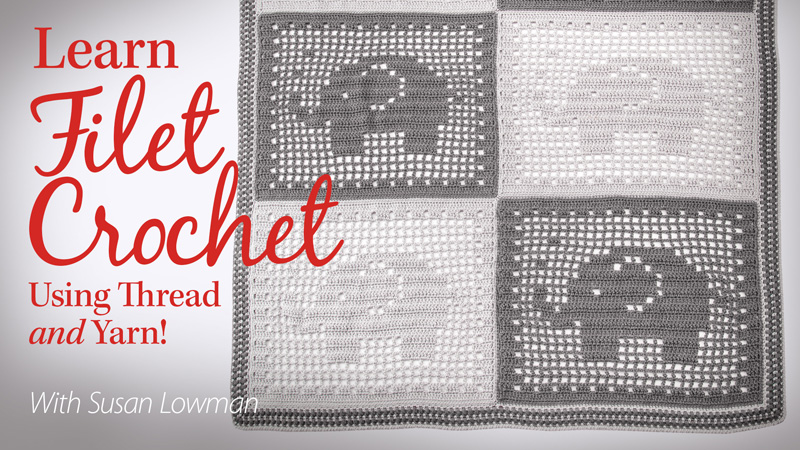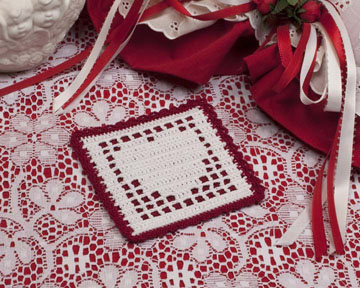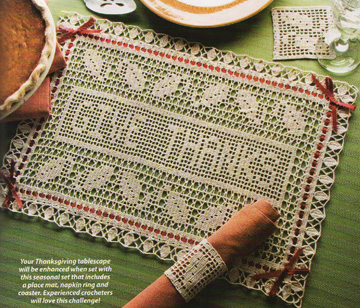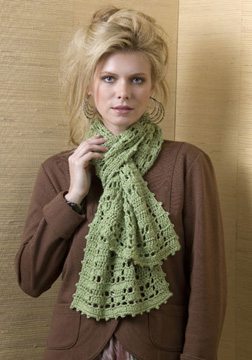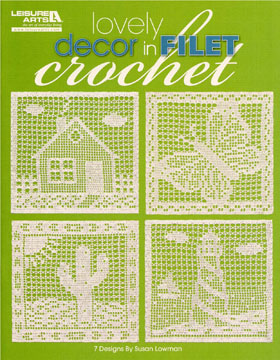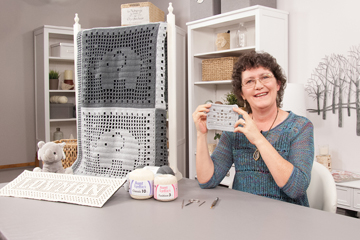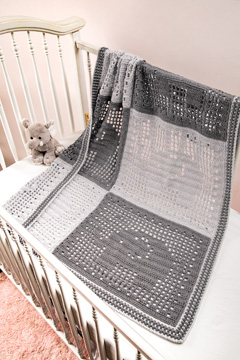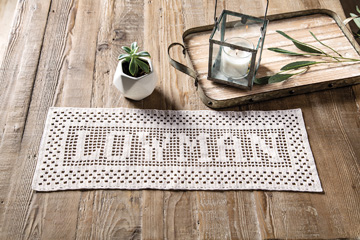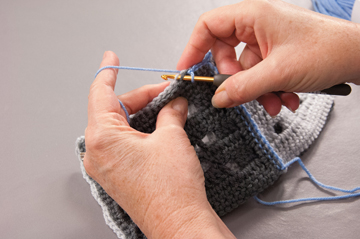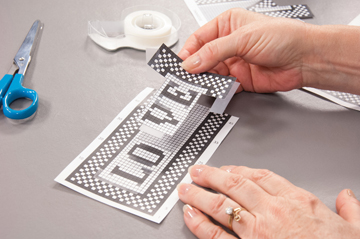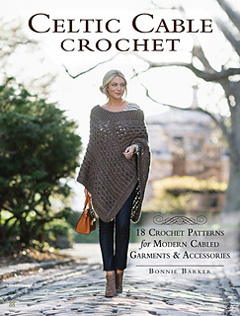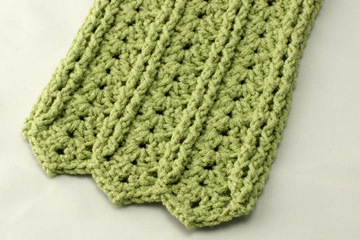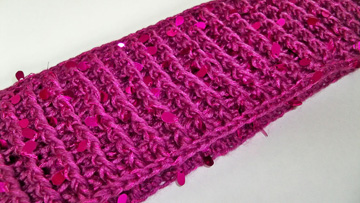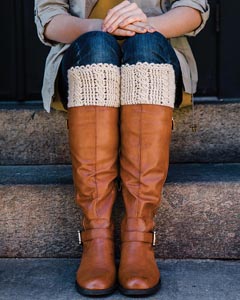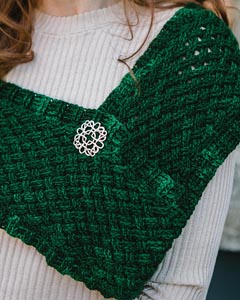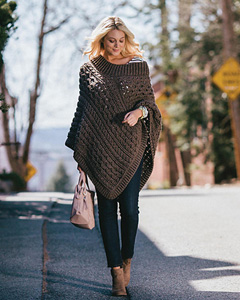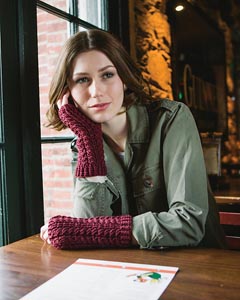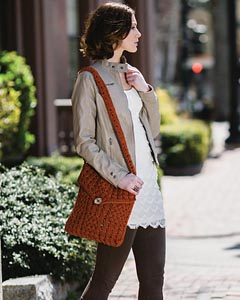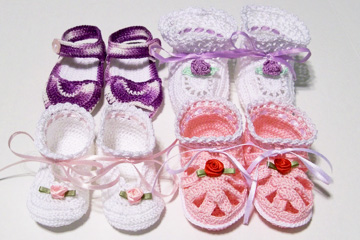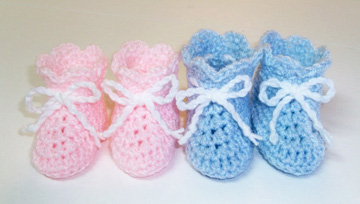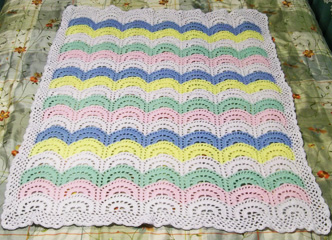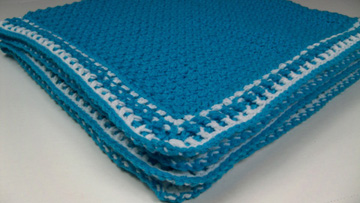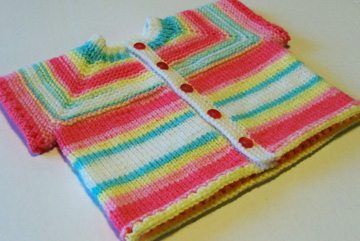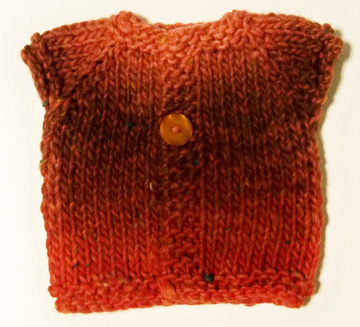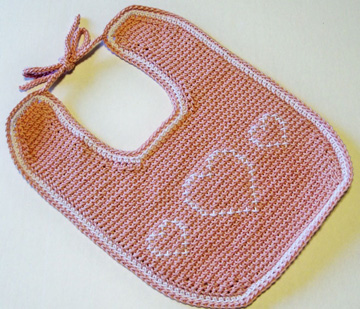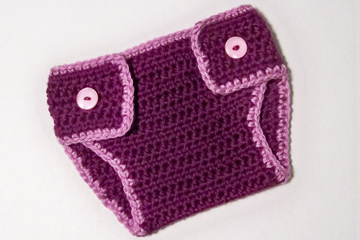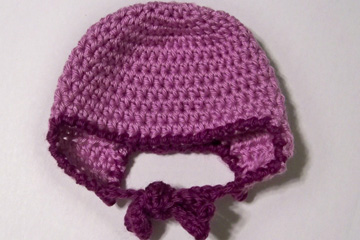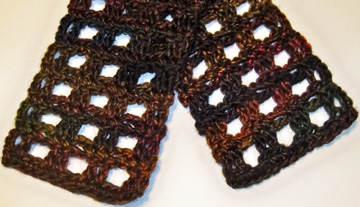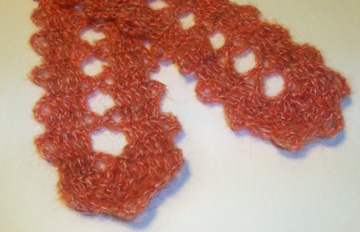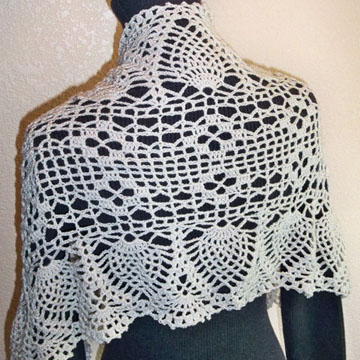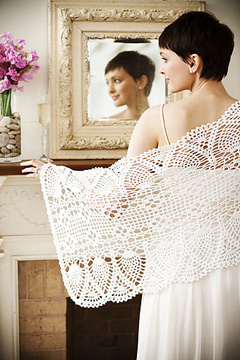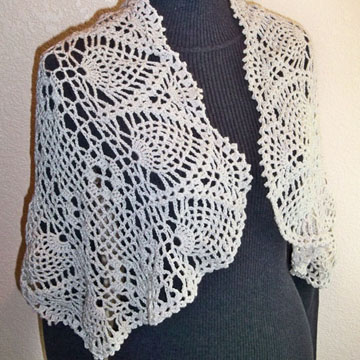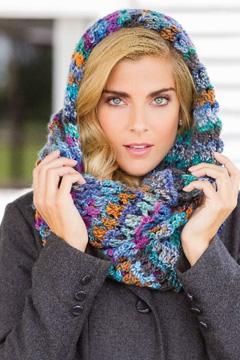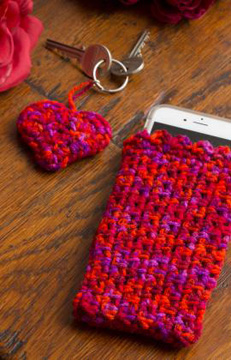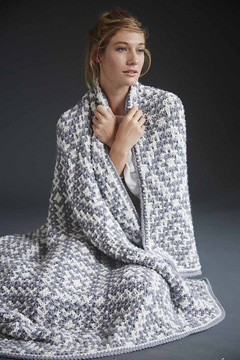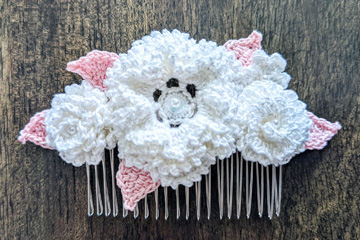
My oldest son is getting married next month (woohoo!) and I wanted to help out with the wedding somehow. My soon-to-be daughter-in-law said she wants to wear a hair comb for the wedding and she texted me a photo of an expensive one to see. I asked if she’d like to have me crochet one for her and she said “yes”! So I did some online research and found more photos of hair combs that are really pretty for inspiration. She didn’t want one that was too big; just something pretty and functional. So I started looking for good flower patterns to use (instead of taking extra time to design my own flowers).
My future DIL picked out the crochet thread colors she’d like me to use from my stash of crochet threads. Since I didn’t have a lot of the iridescent white thread for the flowers, I tried out some of the flower patterns with the pink thread first to see how I liked them. Once she and I picked out which ones we liked best, I crocheted the top 4 flowers in white with size 10 crochet thread and a 1.5mm hook. Then I crocheted some pink leaves to go around the edges.
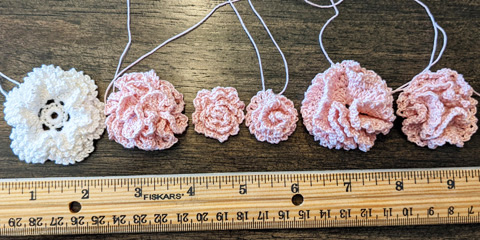
These are the flower patterns I used:
Large flower in center: 6-petal frilled rose with 3 layers from page 14 in the book, “The Go-To Book for Irish Crochet Motifs” by Kathryn White (book #871388), published by Annie’s. A digital edition of this book is available (as of this blog post) here.
Medium flower on left:
free pattern for Fluffy Carnation Crochet Flower from https://daisycottagedesigns.net/freeflowercrochetpattern/
Medium flower on right:
free pattern for Carnation from Yarnspirations https://www.yarnspirations.com/aunt-lydias-bridal-nosegay/ALC0101-025078M.html
Tiny flower on right:
free pattern from https://persialou.com/make-crochet-flower-hair-combs/ This is a great blog post about how she made a hair comb. She used hot glue to attach her flowers and leaves to the hair comb, but I sewed mine in place. Either way works!
I decided the iridescent flowers could use a little more bling, so I sewed a small iridescent white pearl bead to the center of each one (I don’t know what size I used because I just found some in my stash of beads!). Since the large flower in the center had a somewhat large hole in the middle, I used a little larger bead and added an iridescent sequin behind the bead to keep it in place. I used a package of iridescent sequins from my local Hobby Lobby. They worked out great!
Here is a quick, free pattern for the leaves that I made up off the top of my head:
Ch 8, sc in 2nd ch from hook, *hdc in next ch, 2 dc in next ch, dc in next ch, 2 dc in next ch, hdc in next ch, sc in last ch**, ch 2, sl st in top of last sc made to form a picot; working in free lps on other side of ch, sc in first ch (in same ch as last sc); rep from * to **; join with sl st in first sc. Finish off, leaving a long tail for sewing.
For the hair comb, I bought a package of 5 silver hair combs from Amazon. Here’s a link to the hair combs I purchased. Some of the teeth were a little bent when I got them in the mail, but they straightened out nicely with very little effort! And the metal is a really nice quality! They also come in black or gold, if you’d prefer another color/finish. These hair combs have 20 teeth. They also come in other sizes, with more or less teeth, which would make them narrower or wider. The one I used with 20 teeth is about 3” wide.
After I crocheted all the flowers and leaves, I arranged them a few times until my future DIL and I liked the arrangement. I also tried an arrangement with a tatted piece that I had made quite a while ago. It’s too frilly for my future DIL, but you might consider something like this for your hair comb.
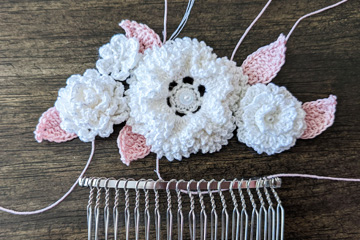
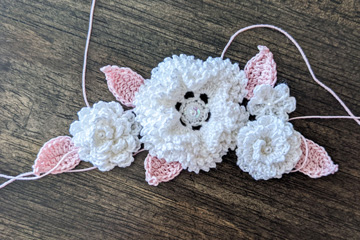
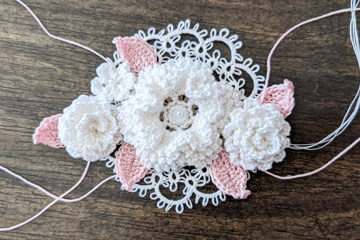
Then I had to decide how I wanted to attach the flowers and leaves to the hair comb. I decided to buy an ebook of Irish Crochet patterns by Kathryn White from Annie’s (on sale), since there was a hair comb in that ebook (book #871106E). Here’s a link for that ebook.
While the hair comb in this book is lovely, it wasn’t what the bride wanted (I LOVE the doily in this book, so I’ll be crocheting that in the near future). However, I liked the way Kathryn attached the flowers and leaf sprays to her hair comb in the book, so that’s what I did. Basically, you wrap some extra crochet thread around the top of the hair comb between the teeth of the hair comb and secure the ends of the thread. That gives you a nice base of thread to attach the flowers and leaves to the hair comb. I actually sewed the leaves to the back of the flowers (not to the hair comb) after I sewed the flowers in place on the hair comb.
What do you think? Do you like this hair comb? What would you do differently?
I can’t wait to see my future DIL wearing this hair comb in her upcoming wedding to my son!
Happy crocheting,
Susan


